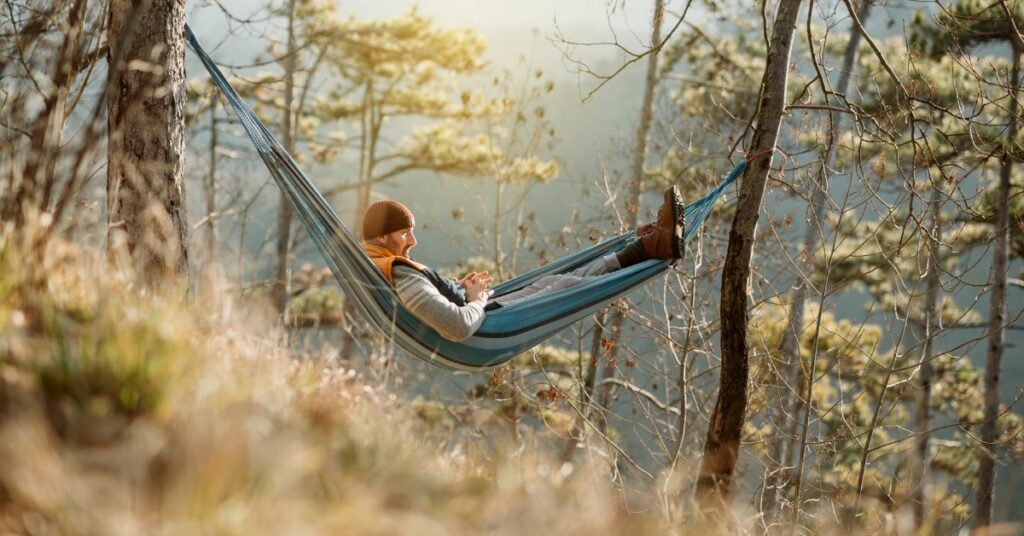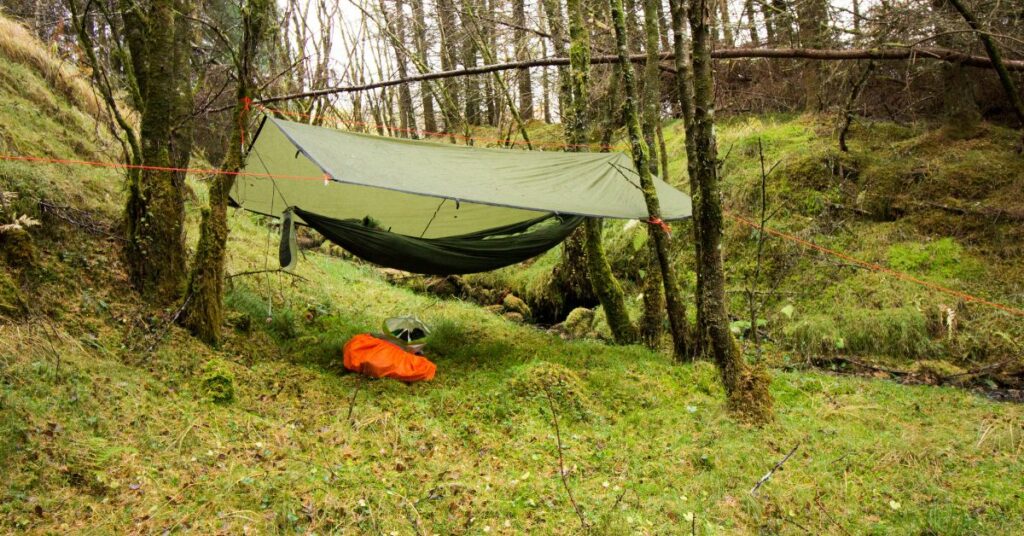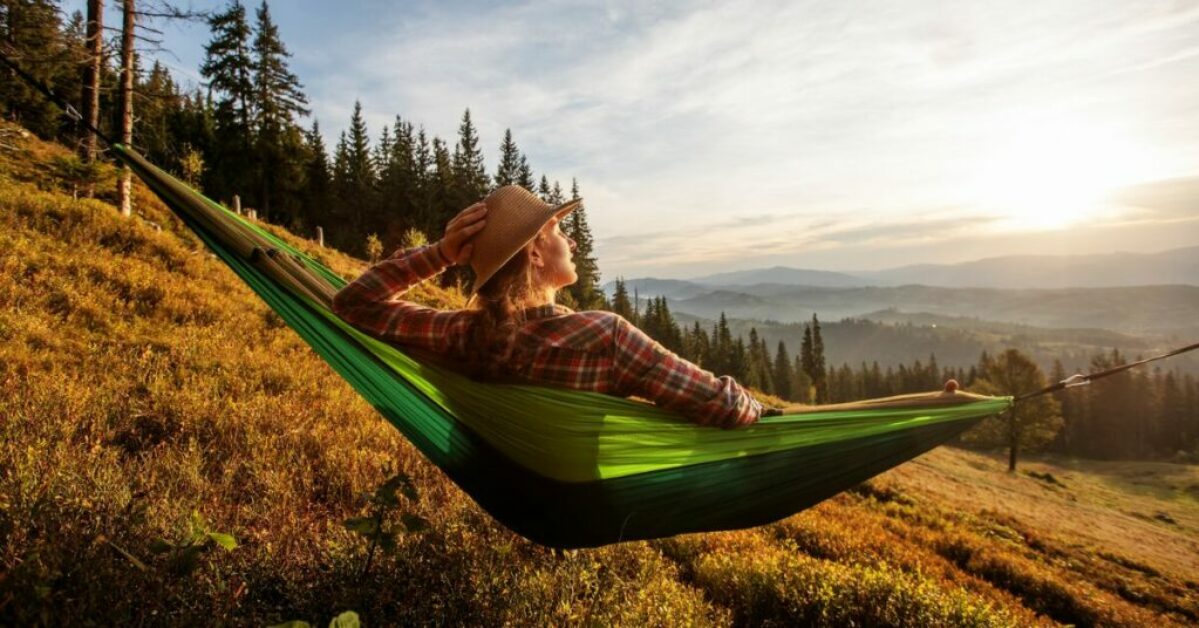The Hammock Experience
It’s a sunny afternoon, and you have been hiking the trails for a good chunk of the day. You are ready to relax and just take it all in. Sitting on the ground or a big rock doesn’t exactly sound relaxing after being on your feet all day, now does it? I don’t know about you, but a hammock sounds like the comfiest alternative to me.
Not only do hammocks come in handy after a long day’s hike, they are a great place to take a nap and recharge your batteries before heading back down the mountain. With most of these guys weighing less than 2 pounds, carrying your pack is super easy. Here we will go over some of the best ways to find the perfect spot to hang one up and turn one into your own personal sleeping bag for day hikes, overnight stays, backyard relaxing and more!
Finding the perfect spot

When looking for a spot to hang the hammock, whether it’s just for an hour or two or an overnight stay, check the park guidelines to make sure hammocks are allowed. Some parks do not like their trees being used for anything other than observing.
You’ll want to find a spot free of brush, somewhat flat where the trees are tall and sturdy, and away from any site that is used as a pathway for humans and animals. Also, always know your surroundings and double-check for poison ivy before setting up shop. Stay away from a water source, which I know, doesn’t sound ideal. Hanging out by the water sounds like a dream spot. But, it’s important to hang it 200 feet away to avoid disturbing the interface between water and land, where there are significant plant habitats in soil stabilization.
The right kind of tree
While finding the perfect tree to hang your hammock is essential for your safety and comfort, you also want to make sure you do not harm the tree. While you could drill a hole or tie a rope to hang your hammock, I suggest you use hammock straps. The straps will prevent bark removal, which could inhibit the tree’s ability to absorb water and nutrients.
A tree twelve inches in diameter would be ideal for hanging your hammock. Any larger around will give you less strap length. I have found oak, maple, and beech trees to be the best. If you are in a more tropical location, palm trees are actually a great choice to hang a hammock, as I am sure you have seen in a postcard or two. Always make certain the tree is healthy, and stay away from anything soft such as evergreen or fruit.
How to sleep in your hammock
Alone! Trust me, when you see a couple taking a nap together in a hammock, looking romantic and comfy, it’s not realistic. You are better off having the hammock to yourself. If you buy a hammock meant for two people, an afternoon nap together will work out fine, but all night could leave you sore in the morning. One suggestion is to lie banana style in a hammock, but that is not the best thing for the spine. Instead, when lying in the hammock, angle yourself about 45 degrees from the center, so you are sleeping diagonally. Also, when setting up a hammock, hang it not more than three feet off the ground to prevent dangerous falls.
The hammock sleeping bag
Now, this is just my suggestion, but I bought a double-sized hammock just for myself. During the warmer months, I lie in the hammock on a simple sleeping pad and use the extra hammock fabric on the side as a pullover sheet. I basically turn my oversized hammock into a hanging sleeping bag.
Hammock Camping

Get off the hard, rocky ground and get into the swing of things! Hammock camping is, without a doubt, one of the best ways to camp. You’ll get the feeling of being rocked to sleep like a baby in a cradle, with a gentle swinging back and forth.
Although hammock camping comes with a lot of special perks, if you are a beginner, it can be a little intimidating. Here I put together a list of things to bring to prepare yourself for a relaxing evening in the hammock.
- Rain Tarp/rain fly (Stay dry)
- Straps (To safely hold up hammock and tarp)
- Bug Net (No one likes buzzing in their ear while they sleep)
- Under quilt (Not needed in summer)
- Sleeping Pad (If the weather is under 50 degrees, it’s best to skip the pad and get a quilt)
- Stakes (Hold down rain tarps)
- Stuff Sack (It’s always good to have one of these to keep wallet, phone, and other personal things together in one area. It also keeps them dry in case of rain.)
- Tarp sleeve. (When getting ready to leave, packing up your hammock in a tarp sleeve will help keep your things protected in case the hammock has any excess water or sap)
What I love about hammock camping is that you don’t have to carry around your tent. Even with all of the bells and whistles, setting up a hammock is more manageable and lighter. There are fewer chances of bugs getting at you while you are sleeping in the great outdoors. On a dry night when you don’t need your tarp, looking through the thin bug netting at the star-filled sky above is a great way to end your evening. Keep checking in on our site for more upcoming tips and tricks in the outdoors!


